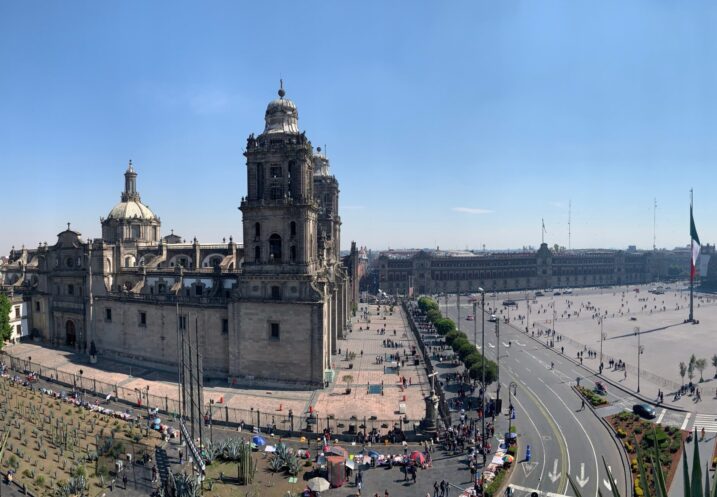
Corruption, the Perception of Corruption, and Violence: Exploring the Linkages in Mexico
February 1, 2021

By Andrew Peters
Corruption perception, not incidence, is the biggest predictor of violence.
Security and corruption are the main concerns of the Mexican public. So what factors lead to violence and corruption? How are violence and corruption connected? This study suggests that perception of corruption, rather than the incidence of it, drives violence. As Mexican civil society and government, along with their international partners, address corruption they need to factor the effect of perception into their interventions.
To explore the relationship between corruption, peace, and economic growth, I used GDP growth, corruption perception, and corruption incidence to predict the Mexico Peace Index score. Instrumental variables are used to estimate causation and not just correlation. The Mexico Peace Index ranks Mexican states from one to five with one as most peaceful and five as least peaceful. The index has five indicators: Homicide, Violent Crime, Organized Crime, Firearms Crime, and Detention without a Sentence. This analysis suggests that increases in GDP are associated with increases in the Mexico Peace Index Score, meaning as GDP goes up peace in Mexico goes down. The same happens when the perception of corruption increases.
The expectation is that economic growth leads to lower levels of violence while corruption incidence leads to increased violence. Instead, there was no significant relationship between corruption incidence and violence. Of the statistically significant relationships, corruption perception’s association with higher levels of violence was the largest in magnitude.
These findings indicate that anti-corruption efforts should prioritize reducing corruption perception to address violence. Without using misleading or manipulative messaging, Mexican civil society and government should work to inspire confidence in anti-corruption progress that has been made. This could build buy-in from the public on advancing anti-corruption and violence reduction efforts. Potential avenues for addressing corruption perception include TV public service announcements and public art, both spheres where conversations on social and political issues already take place in Mexican society. More research could investigate why exactly corruption perception, instead of incidence, appears to be the driver of violence. This research could also test whether reducing corruption perception, independent of corruption incidence, is effective in reducing violence.
Overall, this analysis suggests that corruption perception is an important predictor of violence. This can be a useful factor to consider in the study of illicit financial flows because organized crime groups involved in money laundering and financial crime shape the perception of corruption. Mexico faces the challenge of transnational organized crime in drug trafficking, small arms and light weapons, the illicit trade in cultural property, and crude oil theft. Specifically in the Mexican context, transnational organized crime is a significant piece of the public’s concern around corruption and security.
